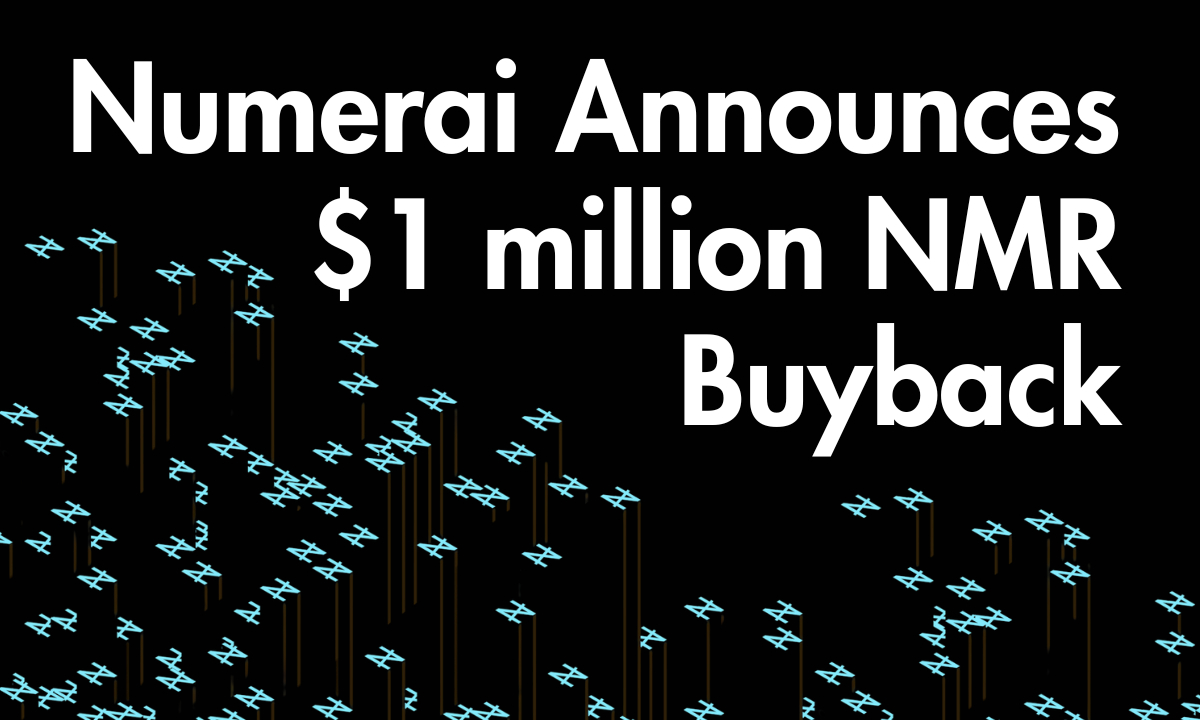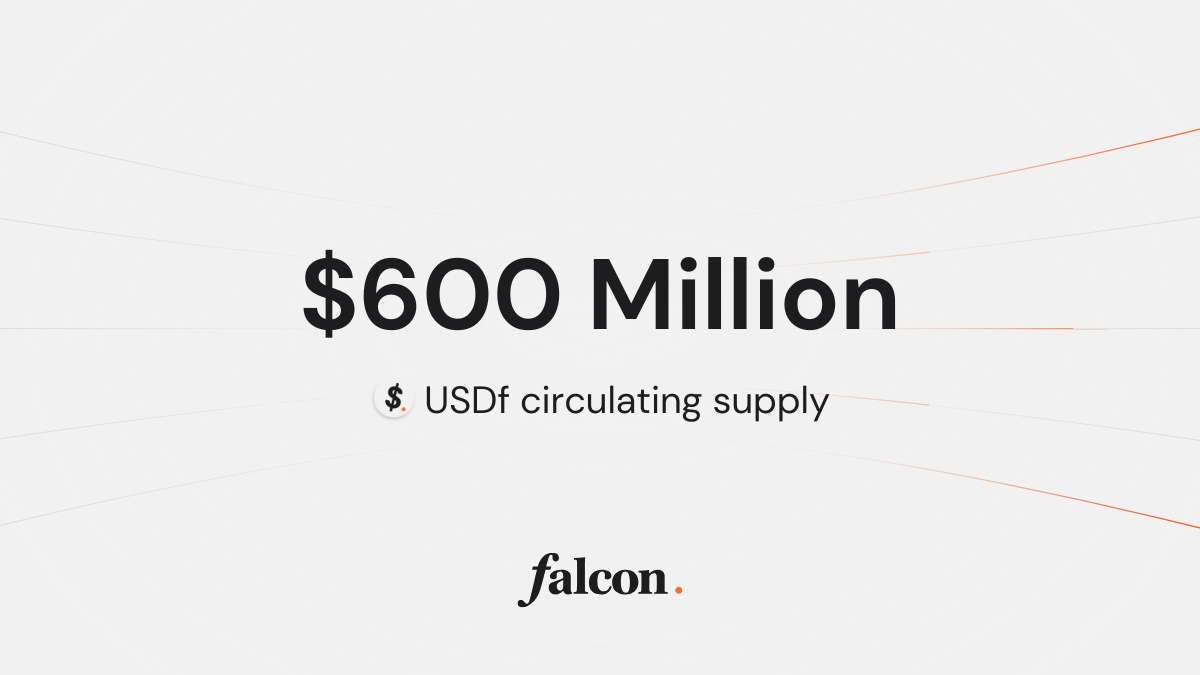Solana crypto leaves rivals like Ethereum in the dust, boasting lightning-fast transaction processing and significantly lower fees. This speed and affordability fueled a meteoric rise for its native cryptocurrency, SOL, which soared a mind-boggling 12,000% in 2021 and briefly reached a market cap exceeding $75 billion, cementing its place among the crypto giants.1
I. What is Solana crypto?
Solana is an open-source blockchain platform that uses a proof-of-stake mechanism to provide smart contract functionality. However, Solana crypto takes proof-of-stake (PoS) to the next level with its innovative proof-of-history (PoH) mechanism.2
Imagine PoS as a traditional clock ticking away, marking the order of transactions on a blockchain. But, Solana added a special high-speed stopwatch called PoH. This stopwatch constantly records the exact time of each transaction using cryptographic hashes, creating a verifiable timeline. Think of it like stamping each transaction with a unique, unalterable timestamp.3

From seasoned developers shaping the future of Web3 to everyday consumers dipping their toes into the world of blockchain, Solana caters to everyone. Its robust tools empower those building groundbreaking applications, while its lightning-fast speed ensures smooth, accessible experiences for all.
Solana crypto isn’t just powerful, it’s the bridge bringing blockchain to people, one seamless transaction at a time. Solana was made for mass adoption!
Read more: Top 5 Solana Dex Ranking in 2024
II. Solana labs and the history of the Solana crypto
1. Solana labs
Solana Labs, Inc. (“Solana Labs”), founded in 2018, is a technology company that builds products, tools, and reference implementations to further expand the Solana ecosystem. Solana Labs thrives on solving problems at the heart of blockchain, shaping the future of infrastructure, crypto, and dApps.4
2. The history of the Solana blockchain
In November 2017, Anatoly Yakovenko published a whitepaper introducing Proof of History (PoH) as a technique for timekeeping between untrusted computers. PoH aimed to address the scalability issues faced by clockless blockchains like Bitcoin and Ethereum. Anatoly envisioned a faster and more scalable network with Loom (later rebranded as Solana).
The first open-source PoH implementation, “Silk,” demonstrated impressive transaction processing capabilities. Solana crypto continued to optimize and achieved remarkable transaction speeds, reaching bursts of 500,000 transactions per second with the v0.10 Pillbox release. Solana had become a reality poised to revolutionize the blockchain industry5.
Read more: Top 6 Solana Native Projects By Category
III. Solana’s technology
1. Solana consensus mechanism
Solana crypto has a unique consensus mechanism called TowerBFT and proof-of-history (PoH).6
Solana’s Tower BFT algorithm tackles several key challenges inherent in blockchain consensus. Firstly, it handles situations where forks get rejected by the majority, ensuring voters can recover without penalty. Secondly, it addresses the issue of overlapping “votable” forks seen by different validators, guaranteeing eventual convergence on a single, accepted chain.
Tower BFT also empowers validators to manage risk by configuring their voting behavior. Importantly, the cost of reverting from an accepted fork is calculable, providing clients with measurable consistency guarantees. This cost increases exponentially with the age of the vote, deterring manipulation attempts.7
Finally, the algorithm is resistant to attacks exploiting differences in Proof of History ASIC speeds between nodes.
2. Proof-of-history concept
Proof of History is a cryptographic method for verifying the order of events on a blockchain. It works by running a complex mathematical function sequentially on a single computer, periodically recording the output and number of times it’s been run. This creates a verifiable timeline that other computers can easily check by re-running the function segments individually.
Crucially, data can be embedded into this timeline by adding it to the function’s state. This creates a timestamp for the data, guaranteeing it existed before the next function step, making it tamper-proof.
Additionally, multiple generators can synchronize their timelines by mixing their states, enabling horizontal scaling and increased processing power.
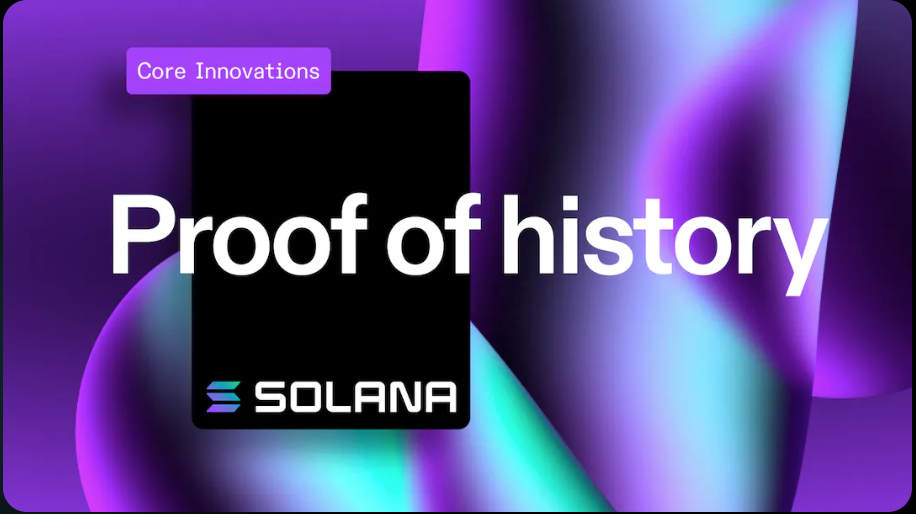
Simply put, Proof of History provides a reliable and scalable way to prove when events happen on a blockchain, without relying on a central clock or trusting other nodes. This adds several key benefits to Solana’s PoS system:
- Boosted Speed: PoH eliminates the need for communication between validators to agree on the time of transactions, dramatically increasing Solana crypto’s processing speed. It can handle thousands of transactions per second, compared to Ethereum’s PoS at around 15-20.
- Enhanced Security: The cryptographic nature of PoH timestamps makes them tamper-proof, adding another layer of security to the blockchain.
- Improved Scalability: PoH’s efficiency allows Solana crypto to scale seamlessly as the network grows, making it a promising platform for decentralized applications (dApps) and future Web3 development.
In essence, PoH acts as a supercharged timer for Solana’s PoS system, propelling it to the forefront of fast, secure, and scalable blockchain technology.
3. Solana cluster
A Solana cluster is a group of validators that collaborate to process client transactions and maintain the integrity of the ledger. Multiple clusters can coexist, but only those with a common genesis block attempt to converge. Transactions sent to the wrong cluster are silently rejected.
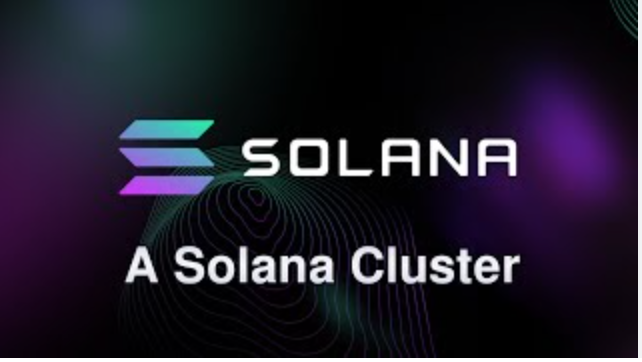
Creating a cluster
To start validators, a genesis config must be created, which includes references to a mint and a bootstrap validator. The bootstrap validator appends the first entries to the ledger and initializes its state with the mint’s account.
Other validators register with any registered member of the cluster. Validators receive entries from the leader, submit votes to confirm their validity, and store them until a sufficient number of copies exist.
Joining a cluster
Validators enter the cluster via registration messages sent to the control plane implemented using a gossip protocol. Synchronization time is proportional to the square of the number of nodes, ensuring that all nodes eventually have the same information and preventing censorship by any one node.
Sending transactions to a cluster
In the transaction processing flow, clients send transactions to a validator’s Transaction Processing Unit (TPU) port. The validator forwards the transaction to the leader, who bundles and timestamps them as entries.
These entries are then pushed onto the cluster’s data plane, where validator nodes validate and append them to the ledger.
Confirming transactions
Solana’s scalable confirmation for a cluster of thousands of nodes is achieved through timestamping transactions, splitting them into batches, and recursively sharing batches among nodes. Confirmation time increases logarithmically with the number of validators.
Solana crypto rotates leaders at fixed intervals and uses Turbine Block Propagation to scale up to hundreds of thousands of validators.8
Read more: Solana Validator Health Report Shows Sustainable Growth
4. Solana command line (CLI) tools
The Solana command-line tool is a utility that helps to create a wallet, send and receive SOL tokens, and participate in the cluster through stake delegation.9
To interact with a Solana cluster, users utilize its command-line interface, also known as the CLI. The CLI is the primary deployment location for new functionality by the Solana crypto core team. While it may not be the most user-friendly, the command-line interface offers direct, flexible, and secure access to Solana accounts.
5. Games tooling
The Games Toolkit on the Solana blockchain empowers players to participate in a world where they can both play and own, ushering in new possibilities for on-chain economies.
With the concept of true digital ownership revolutionizing video games, players now can construct their digital assets and features. Leveraging Solana’s scalability, the stage is set for the realization of expansive, player-driven digital economies in the present.10
- GameShift, developed by Solana Labs, is a comprehensive blockchain game development API designed to address the significant challenges faced by game publishers when creating or transitioning games to web3.
- Coral’s xNFTs, or executable NFTs, enable businesses to create game experiences that go beyond the limitations of the traditional web stack. With xNFTs, games, and programs can be run directly from a compatible wallet, offering a new level of interactive possibilities.
Read more: Top 7 Games Worth Spending Time For 2024
IV. How does Solana crypto work?
1. How to build and deploy an on-chain Solana program?
To build and deploy your first on-chain Solana program directly in your browser, there are several key steps you should follow:

Step 1: Learn core concepts
Gain a solid understanding of fundamental concepts such as programs, transactions, and accounts. This knowledge will form the foundation of your Solana crypto development journey.
Step 2: Understand Solana programs
Familiarize yourself with how Solana programs work and how program execution begins when a transaction is submitted to the cluster. Explore the inner workings of Solana programs to grasp their functionality fully.
Step 3: Explore data storage on Solana crypto
Dive into how programs store data on the Solana blockchain. Understand the different data structures and methods used to store and retrieve data effectively.
Step 4: Start developing with Rust or C/C++
Choose your preferred programming language, either Rust or C/C++, to begin developing on-chain Solana programs. Utilize the available resources and example programs on GitHub to guide your learning and development process.
Step 5: Set up a local development
Streamline your development workflow by setting up your local development environment with the Solana Test Validator. This will enable faster iteration and testing of your Solana crypto programs.
Step 6: Interact with Solana clusters
Learn how to interact with Solana clusters using the JSON RPC API. Explore the available endpoints and functionalities to build robust and dynamic interactions with the Solana network.
Step 7: Master program debugging
Acquire knowledge of debugging Solana crypto programs using unit tests, logging, and error-handling techniques. These debugging strategies will help you identify and resolve issues effectively during the development process.
By following these steps, you will be well-equipped to build and deploy your first on-chain Solana program, gaining valuable experience and contributing to the Solana ecosystem.11
Read more: Top 5 Main IDO Platforms on Solana
2. How to run a Solana validator node?
A validator (also known as a computer) is an essential component of the Solana network, responsible for executing a program that tracks all accounts and validates transactions. Without validators, the Solana crypto would be unable to operate effectively.
Having a diverse set of independent entities running validators enhances the cluster’s resilience against potential attacks or disasters.

By becoming a validator, you not only contribute to the growth of the network but also gain firsthand experience in understanding the inner workings of the Solana cluster. Additionally, you join a vibrant community of operators who share a deep passion for the Solana ecosystem.
To run a validator on Solana crypto, there is no strict minimum amount of SOL required, but a voting account with a rent-exempt reserve of 0.02685864 SOL is needed. Hardware recommendations include a CPU with 12 cores or more, 256GB or more of RAM, and a PCIe Gen3 x4 NVME SSD or better. 12
Running a validator on a cloud computing platform may not be cost-efficient, and running it inside Docker is not recommended. Internet service should be at least 1GBit/s symmetric, and port forwarding is required for certain ports.13
3. How many Solana validators are there?
Solana Crypto’s Mainnet Beta network went live in March 2020. Since then, it’s grown into a network of over 3,400 validators, including over 2,400 consensus nodes.14
V. Solana vs Ethereum
1. Comparison between Solana and Ethereum
Solana’s rapid expansion and versatility have led to inevitable comparisons with Ethereum, the leading blockchain for decentralized applications (dApps):
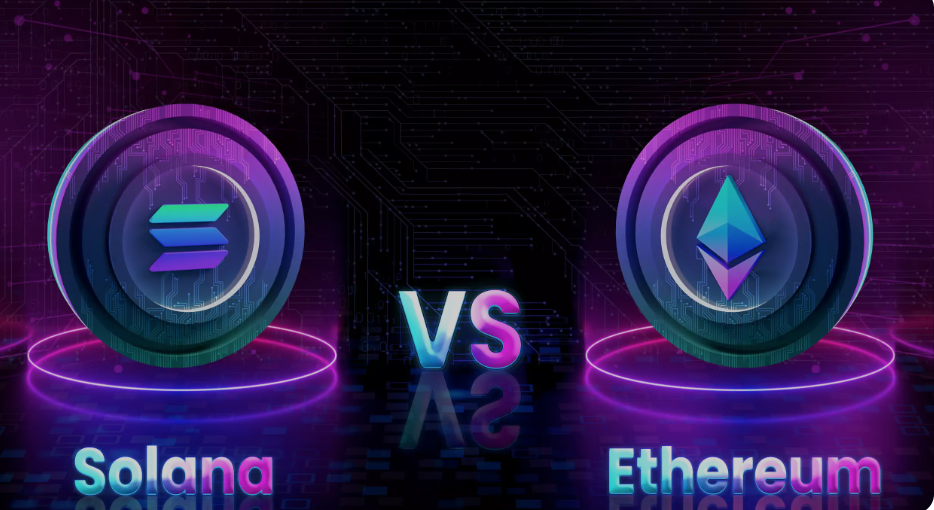
Smart contracts
Both Solana crypto and Ethereum offer smart contract capabilities, which are essential for running cutting-edge applications like decentralized finance (DeFi) and non-fungible tokens (NFTs).
Consensus
Solana and Ethereum both use a proof-of-stake (PoS) consensus mechanism, where validators stake their cryptocurrency as collateral to earn rewards for supporting the blockchain. Solana crypto enhances PoS by also implementing Proof of History (PoH).
Speed
Solana gained significant attention in 2021 due to its notable advantage over Ethereum in terms of transaction processing speed and costs. Solana crypto can process over 2,700 transactions per second (as of December 12, 2023) with an average transaction cost of $0.00025.
In contrast, Ethereum can handle fewer than 15 transactions per second, and the average transaction fee is approximately $2.62.1516
Read more: An Overview of Ethereum
2. How to bridge from Solana to Ethereum
The interoperability between Solana and Ethereum is an exciting advancement in the blockchain field. It allows users to effortlessly transfer assets between the Solana and Ethereum networks. Now let’s focus on how to bridge from Solana to Ethereum using two different options: Allbridge and Portal Bridge.
To bridge tokens from Solana to Ethereum using Allbridge project, follow these steps:
- Step 1: Visit the Allbridge website.
- Step 2: Connect your Solley, Phantom, or Exodus wallet.
- Step 3: Choose the Solana crypto to Ethereum option.
- Step 4: Enter the address, select the number of tokens, and click on send to complete the transaction.
Alternatively, users can use Portal Bridge (formerly known as Wormhole Bridge) to bridge tokens between Solana crypto and Ethereum. Here’s how:
- Step 1: Go to the Portal Bridge website.
- Step 2: Connect your Ethereum and Solana wallets.
- Step 3: Select the token you want to bridge from SOL and ETH networks.
- Step 4: Enter the number of tokens you want to transfer.
- Step 5: Double-check the details and confirm the transaction.
It’s worth noting that using a Centralized Exchange (CEX) is also an option for bridging, but it comes with security risks. If you choose this method, follow these steps:
- Step 1: Access your CEX account.
- Step 2: Transfer ETH from your wallet to the CEX.
- Step 3: Once you receive the assets, convert your crypto to a native token like SOL.
- Step 4: Withdraw your SOL and send it to your Solana crypto wallet.
While using portals like Allbridge and Portal is generally recommended, CEXs can also be considered, although they require KYC and personal information submission.17
Read more: Top 5 Best Decentralized Crypto Exchanges In 2024
3. How to exchange Ethereum for Solana
How to Swap Ethereum for Solana in 5 Simple Steps:18
Step 1: Select Your Trading Pair
Choose from over 500 available cryptocurrencies and instantly get the best rates for your swap.
Step 2: Choose Your Exchange Rate
Decide on the exchange rate that suits your preferences, whether it’s a fixed or floating rate.
Step 3: Provide Your Crypto Wallet Address
Enter the address of your crypto wallet where your new Solana coins will be transferred once the exchange is complete. If you need assistance, you can choose a wallet from the list of Changelly’s partners.
Step 4: Complete the Payment
Ensure that you have the required amount for the swap and send your Ethereum to the wallet address displayed on the screen.
Step 5: Verify Your Crypto Wallet
Congratulations! Your Ethereum has been successfully swapped for Solana crypto. Check your crypto wallet to see your newly acquired coins.
Read more: Top 5 Best Solana Wallets
VI. Solana Ecosystem
1. Solana economics
Solana’s crypto-economic system aims to create a self-sustaining economy with participant incentives aligned to network security and decentralization. The main participants are validation clients, who receive protocol-based rewards and transaction fees.
Protocol-based rewards are generated from inflationary issuances, while transaction fees serve as participant-to-participant transfers. The document discusses the inflation design, including terminology, the inflation schedule, and adjusted staking yield. It also covers transaction fees and storage rent economics.19
Inflation design
Total Current Supply (SOL)
The total amount of tokens generated and not yet burnt, including those from the genesis block and protocol inflation. It can be reduced by burning tokens through transaction fees or other mechanisms.
Inflation Rate
The annualized growth rate of the Total Current Supply. New tokens are created on a predetermined inflation schedule.
Inflation Schedule
A description of token issuance over time. The proposed schedule for Solana crypto is disinflationary, starting at a high inflation rate and gradually reducing until stabilizing at a long-term inflation rate.
Effective Inflation Rate
The observed inflation rate on the Solana network accounts for factors that decrease the Total Current Supply, such as burning transaction fees and loss of tokens.
Staking Yield
The rate of return earned on SOL staked on the network. Validators and token holders can delegate their tokens to avoid token dilution due to inflation.
Token Dilution
The change in the proportional representation of tokens is due to the introduction and distribution of new tokens through inflation. Staked tokens receive the proportional distribution, mitigating dilution concerns for staked token holders.
Adjusted Staking Yield
The change in fractional token supply ownership of staked tokens due to the distribution of the Solana crypto’s inflation issuance, accounting for the dilutive effects of inflation.20
Transaction fees
Transaction fees on the Solana blockchain are small fees paid to process instructions. These fees compensate validators for processing transactions, reduce network spam, and provide economic stability.
A proportion of each fee is burned to sustain the network’s security, while the remaining goes to the leader processing the transaction. Transaction fees can be prioritized with an optional fee to boost execution times.21
Storage rent economics
When a transaction is submitted to the Solana ledger, there are costs involved. These costs include transaction fees paid by the submitter and collected by a validator.
Additionally, there are costs associated with the storage of the active ledger state, which is maintained by the rotating validator set. To address these costs, a preliminary design and implementation of storage rent has been developed.
There are two methods for paying storage rent:
Method 1: Set it and forget it
Accounts with two years’ worth of rent deposits secured are exempt from network rent charges.
By maintaining a minimum balance, account holders ensure continuous access to their account data.
Method 2: Pay per byte
If an account has less than two years’ worth of deposited rent, the network charges rent on a per-epoch basis, deducted at a rate specified in Genesis.
For more technical implementation details, please refer to the Rent section in the Solana documentation. 22
2. Solana token
Token Program
Solana crypto token program defines a common implementation of Fungible and Non-Fungible tokens.
The Solana token program is written in Rust and available on crates.io and docs.rs. Auto-generated C bindings can be found on GitHub. JavaScript bindings are also available for loading the Token Program onto a chain.
The SPL (Solana Program library) Associated Token Account program provides conventions for wallet address-token account mapping and funding. The SPL token program is considered complete, with potential bug fixes in the future.23
“The Solana Program Library (SPL) consists of on-chain programs designed for the Sealevel parallel runtime. These programs are thoroughly tested against Solana’s implementation of Sealevel, known as Solana-runtime, and deployed on its Mainnet.
As other implementations of Sealevel emerge, we welcome contributions to ensure the portability of the programs across all implementations.”24
– Solana SPL
Send Solana token
To send SOL tokens to someone, you need a keypair path, the recipient’s public key, and the number of tokens to transfer. Use the “Solana transfer” command with the appropriate parameters. Confirm the updated balances with “Solana balance”.25
Receive Solana token
To receive tokens in Solana crypto, you will need an address to which others can send tokens to. In the Solana blockchain, the wallet address is the public key of a key pair. There are different methods for generating keypairs, and the method you choose depends on how you store keypairs. Keypairs are stored in wallets.
Before you can receive tokens, you will need to create a wallet using the Solana CLI. After creating a wallet, you will have a public key for each keypair you generate. The public key is a string of base 58 characters, typically ranging from 32 to 44 characters in length.
How much is Solana’s SOL token in a fractional amount?
The system can carry out micropayments using fractional SOLs, known as “Lamports.” Lamports are named after Leslie Lamport, who had a significant impact on Solana’s technology. Each lamport is equivalent to 0.000000001 SOL.26
3. Solana staking
Solana Staking allows users to participate in the Solana blockchain’s security mechanism and earn network rewards. Staking involves locking up tokens as collateral, and validators who create blocks receive rewards. 27
However, there are risks such as slashing and liquidity issues. Users can stake SOL through solo staking, delegating to a validator, staking via centralized exchanges, or joining staking pools. Ledger offers a secure option for staking SOL, allowing you to delegate your tokens and earn rewards while maintaining control of your private keys.
The bottom line about Solana crypto
Solana is a blockchain that rivals Ethereum in terms of purpose, use cases, and capabilities, and may even exceed them. It is a popular blockchain, and its token, SOL, holds a significant share of the cryptocurrency market.
| DISCLAIMER: The information on this website is provided as general market commentary and does not constitute investment advice. We encourage you to do your own research before investing. |
Article Source:
- Solana Price Today, sol to USD live price, marketcap and Chart (no date) CoinMarketCap. Available at: https://coinmarketcap.com/currencies/solana/ (Accessed: 04 January 2024). ↩︎
- Solana (blockchain platform) (2023) Wikipedia. Available at: https://en.wikipedia.org/wiki/Solana_(blockchain_platform) (Accessed: 04 January 2024). ↩︎
- Proof of history: How Solana brings time to crypto. Solana. (2023, August 7). https://solana.com/news/proof-of-history (Accessed: 04 January 2024). ↩︎
- Bringing crypto to the world. Solana Labs. (n.d.). https://solanalabs.com/ (Accessed: 04 January 2024). ↩︎
- History (no date) Solana Docs. Available at: https://docs.solana.com/history (Accessed: 04 January 2024). ↩︎
- Research, C. (2022) The consensus mechanism of Solana, Crypto Research Report. Available at: https://cryptoresearch.report/crypto-research/the-consensus-mechanism-of-solana/ (Accessed: 04 January 2024). ↩︎
- Tower BFT (no date) Solana Docs. Available at: https://docs.solana.com/implemented-proposals/tower-bft (Accessed: 04 January 2024). ↩︎
- A solana cluster (no date) Solana Docs. Available at: https://docs.solana.com/cluster/overview (Accessed: 04 January 2024). ↩︎
- Command-Line Guide (no date) Solana Docs. Available at: https://docs.solana.com/cli (Accessed: 04 January 2024). ↩︎
- Games tooling (no date) Solana. Available at: https://solana.com/solutions/games-tooling (Accessed: 04 January 2024). ↩︎
- Developers: Solana docs (no date) Developers | Solana Docs. Available at: https://docs.solana.com/developers (Accessed: 04 January 2024). ↩︎
- What is a validator? (no date) Solana Docs. Available at: https://docs.solana.com/validator/overview/what-is-a-validator (Accessed: 04 January 2024). ↩︎
- “Validator Requirements.” Solana Docs, https://docs.solana.com/running-validator/validator-reqs. Accessed 4 Jan. 2024. ↩︎
- “Solana Foundation Validator Health Report: March 2023.” Solana, 30 Oct. 2023, https://solana.com/news/validator-health-report-march-2023. ↩︎
- Ethereum (ETH) Blockchain Explorer – Etherscan, https://etherscan.io/. Accessed 4 Jan. 2024. ↩︎
- Solscan.io. “Solscan – the Most Intuitive Solana Explorer.” Solscan.Io, https://solscan.io/. Accessed 4 Jan. 2024. ↩︎
- Karunanidhi, Vignesh. “How to Bridge from Solana to Ethereum.” Watcher Guru, 2 May 2023, https://watcher.guru/news/how-to-bridge-from-solana-to-ethereum#google_vignette. ↩︎
- “Eth to Sol Exchange: Convert Ethereum to Solana at the Best Rates.” Https://Changelly.Com, https://changelly.com/exchange/eth/sol. Accessed 4 Jan. 2024. ↩︎
- “Solana Economics Overview.” Solana Docs, https://docs.solana.com/economics_overview. Accessed 4 Jan. 2024. ↩︎
- “Terminology.” Solana Docs, https://docs.solana.com/inflation/terminology. Accessed 4 Jan. 2024. ↩︎
- “Transaction Fees.” Solana Docs, https://docs.solana.com/transaction_fees. Accessed 4 Jan. 2024. ↩︎
- “Storage Rent Economics.” Solana Docs, https://docs.solana.com/storage_rent_economics. Accessed 4 Jan. 2024. ↩︎
- “Token Program.” Solana Program Library Docs, https://spl.solana.com/token. Accessed 4 Jan. 2024. ↩︎
- “Introduction.” Solana Program Library Docs, https://spl.solana.com/. Accessed 4 Jan. 2024. ↩︎
- “Send and Receive Tokens.” Solana Docs, https://docs.solana.com/cli/transfer-tokens. Accessed 4 Jan. 2024. ↩︎
- “Introduction.” Solana Docs, https://docs.solana.com/introduction. Accessed 4 Jan. 2024. ↩︎
- Das, Lipsa. “Solana Staking: How to Stake Sol.” Ledger, 12 Sept. 2023, https://www.ledger.com/academy/solana-staking-how-to-stake-sol. ↩︎























